For several years now, we have welcomed students from the BTS CIEL (Cybersecurity, IT and Networks, Electronics – specializing in Electronics and Networks or IT and Networks) for internships. Last year, we hosted Kyran and Océane, who were in their first year, for a 6-week internship during which their work on the Internet of Things (IoT) far exceeded our expectations.
Following this, we had fruitful discussions with their electronics teacher, Marc Terras, which led to the development of a second-year examination project on SmartFarming for the 2025 academic year. We signed the service agreement together in January 2025, and the project began according to the specifications we had drafted.
In early June, the DataCup team, along with our IoT expert consultant François Pacull, attended the project review. On this occasion, we were able to discover all the students' work and results.
Meet the Electronics and Networks students, their teachers, and the DataCup team:
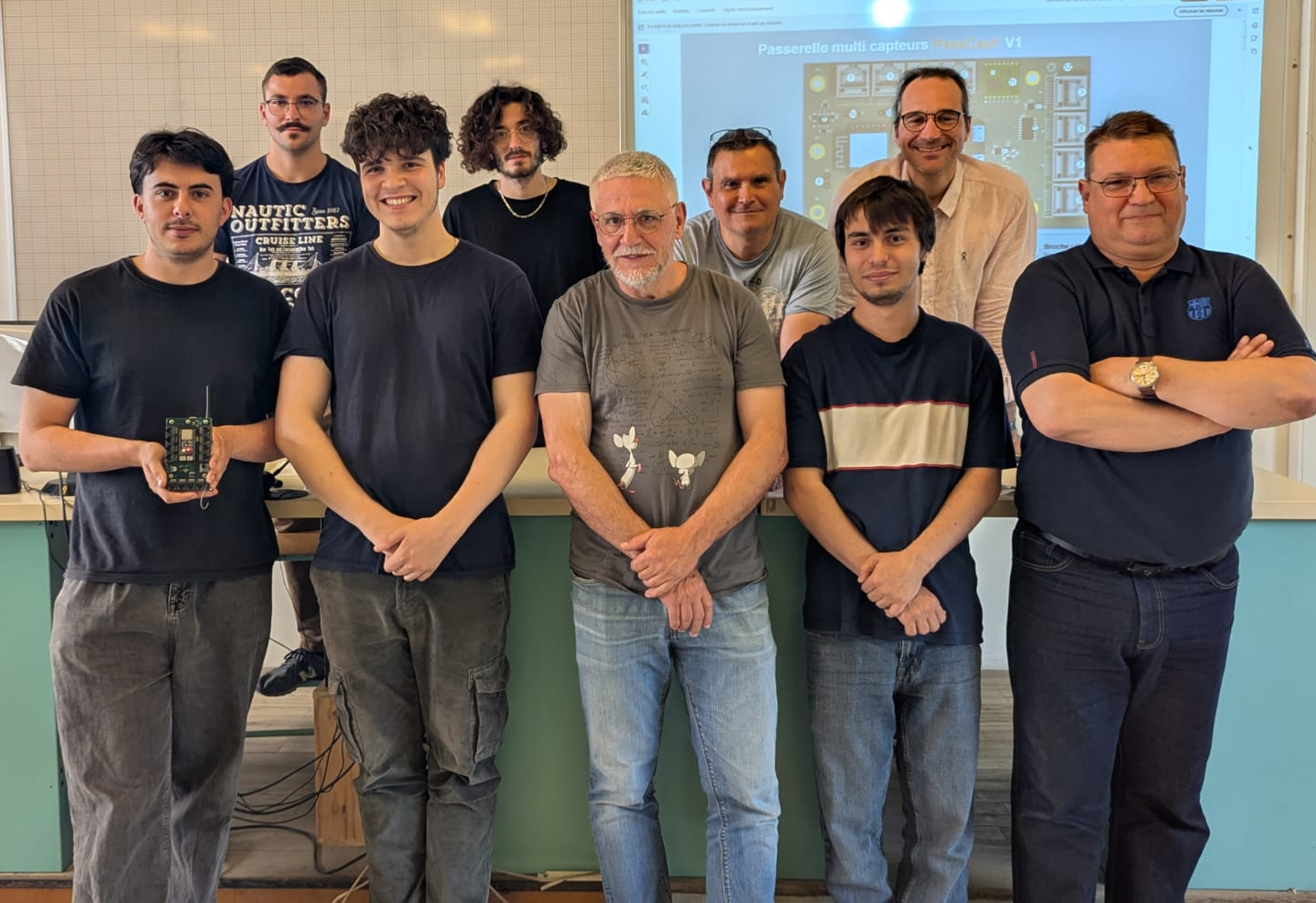
Project Background: SmartFarming
DataCup is involved in the CombiFarm research and innovation project, funded by the PRIMA Foundation (Partnership for Research and Innovation in the Mediterranean Area), which began in June 2024. The project includes a component on smart farming systems.
Smart agriculture based on IoT technology is becoming increasingly common worldwide, as the data collected helps farmers fine-tune their irrigation systems and choose inputs to enrich their soil. However, this technology is still difficult to access in areas where Internet connectivity is poor or non-existent and IoT networks are too expensive.
To address this issue, we developed an integrated option for the DataCup expanding its functionalities to enable IoT data collection without Internet access or costly network infrastructure. In addition to its standard features, this new option allows it to act as a LoRaWAN gateway (long-range wireless network). This protocol was specifically designed to connect loT devices wirelessly to a network.
Within the CombiFarm project, applications include data collection in microalgae culture tanks at the GEPEA laboratory and in a biodigester at a pilot site in Morocco. To meet our partners' needs, we first discussed which metrics needed to be measured and what sensors would be required. We then designed a prototype to accommodate these sensors (connections, protocols, specific challenges, etc.) and transmit the data to the LoRaWAN gateway integrated into the DataCup.
Prototype Development
The prototype development focused on four main areas:
- The main electronic board
- Sensors
- Actuators
- Power management
Each student was responsible for one of these areas.
Despite supply chain challenges, the students—supported by their teachers—managed to produce a fully functional prototype that met the many requirements outlined in our specifications.
Kyran, now in his second year of BTS CIEL, presents the main electronic board, which he designed himself:

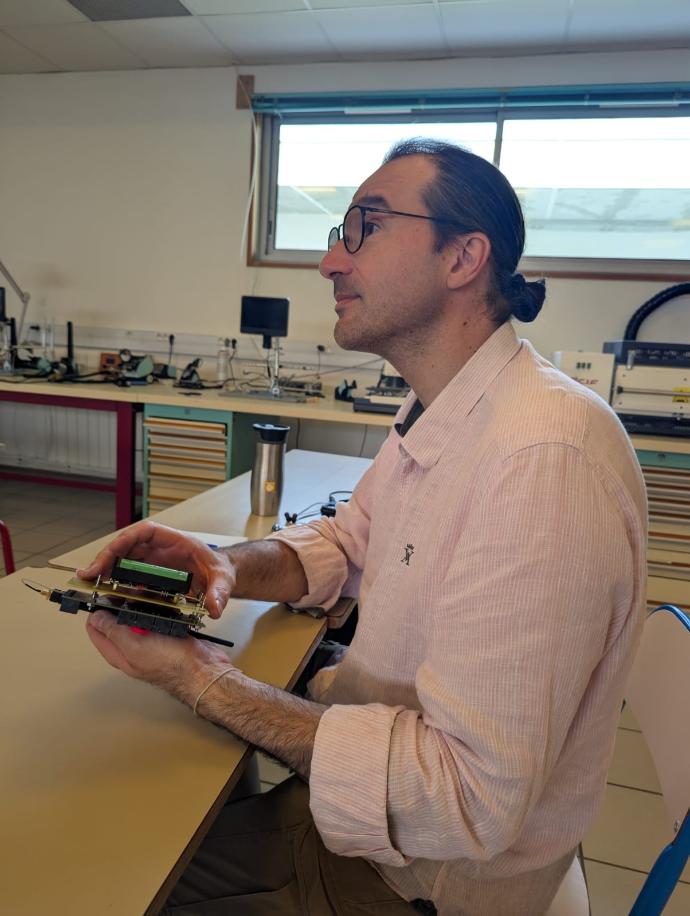
Our CEO, Florent THOMAS, discovers the new prototype for the first time:
During the project review, we had the opportunity to attend several demonstrations:
- Sending simulated data from the main electronic board to the LoRaWAN gateway
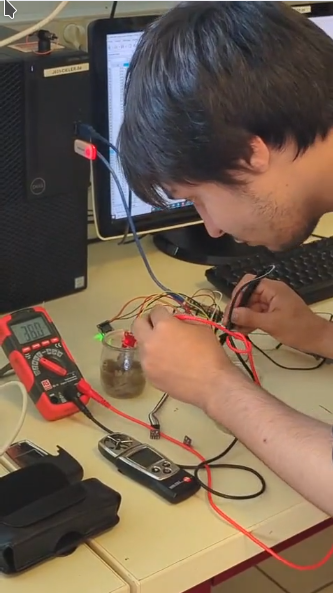
- Sending sensor data to the main electronic board, visualized on a computer, with validation of the transmitted data. In the photo, a conductivity-based moisture sensor is being tested.

- Starting and stopping a motor and a lamp, on both DC and AC power, via the main board
The students now have about ten days left to finalize their work, which they will present during their final exam in mid-June. At that time, they will hand over two prototypes, one of which will be sent to our partner GEPEA for real-world testing.
This is Just the Beginning...
We are very satisfied with the work done on this class project, and the students shared how meaningful it was to work on a real project. In the absence of industry partnerships, teachers often have to "invent" a fictional project.
This is why we have confirmed our desire to repeat the experience next year. As with any innovation, we have plenty of ideas to improve this prototype, and by then, we will also have received valuable field feedback.
If you need to collect data in the field using IoT sensors and are facing connectivity challenges (such as lack of infrastructure or high costs), limited electricity access, or are seeking low-tech solutions, feel free to contact us for a personalized study.
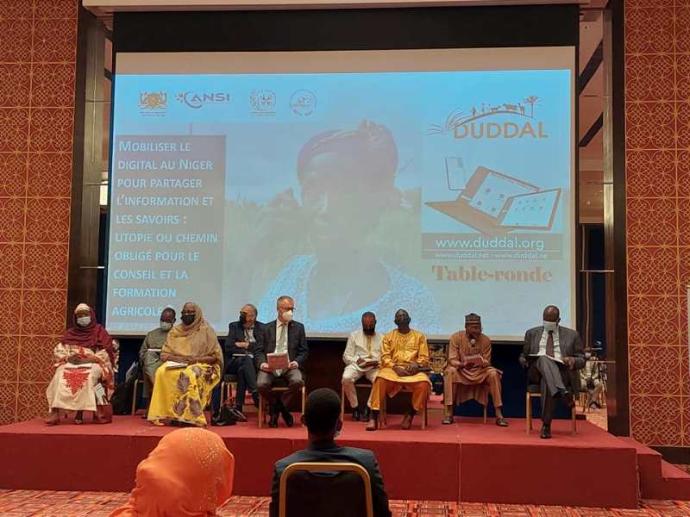 Duddal
Duddal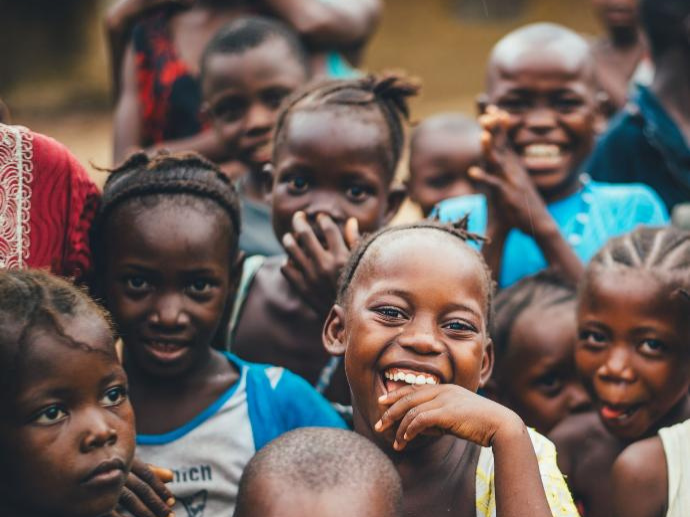 SOS Village d'Enfants Niger
SOS Village d'Enfants Niger

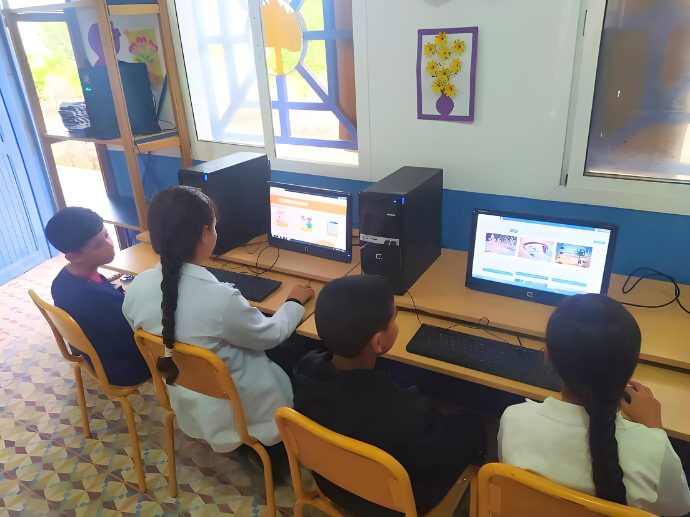
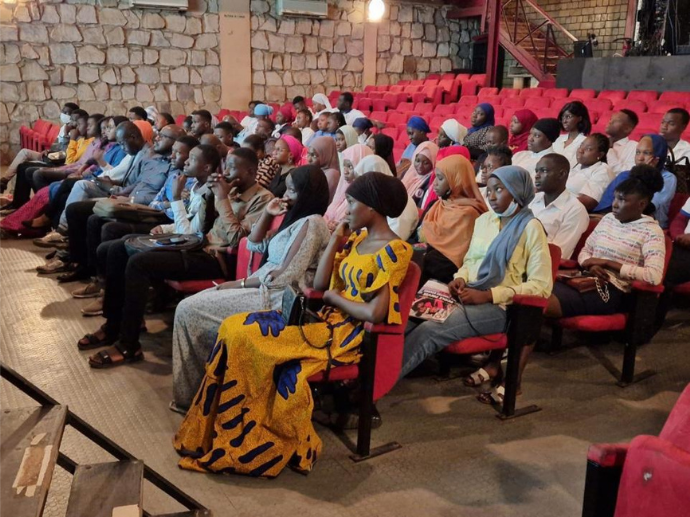
SmartFarming project with Pablo Picasso's High School In Perpignan